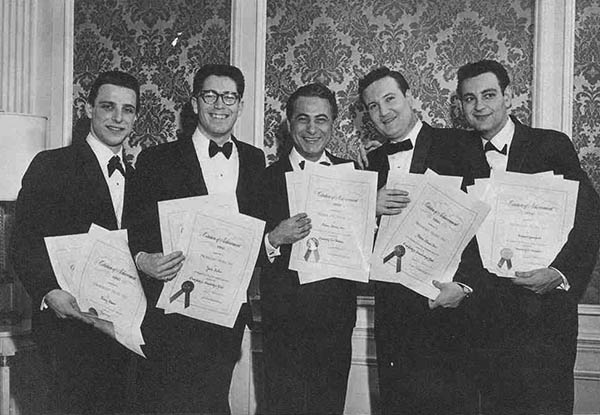
The legend of the Brill Building may be hard to swallow — that's because most of the action took place someplace else.
I am so sick of this Brill Building crap.
This is revisionism in it’s most blatant form.
Okay. The greatest writers of the early-'60s, Carol King and Gerry Goffin, Barry Mann and Cynthia Weil, Howie Greenfield and Neil Sedaka, Jack Keller and Helen Miller were all signed to the same publishing company. It was called Aldon Music and it was named after its two partners Al Nevins and Don Kirshner.
Al Nevins was a former member of the musical group The Three Suns and Donnie Kirshner was a hustler/writer who hung out with Bobby Darin. Together they formed this spartan company, and in a flurry of unparalleled genius, signed the greatest songwriting minds of a generation. Songs like "Will You Love Me Tomorrow", “You’ve Lost That Lovin’ Feelin,” and “Up On The Roof” poured out of this genius monopoly like water from the tap.
Did this all take place in the Brill Building?
No way, Jose!
The Brill Building’s finest moments were in the '40s and late '50s at best. The Brill Building was a throwback to the past and the original Tin Pan Alley. The rents were high, and so the embryonic music business minions of the early '60s flocked to 51st and Broadway to the renovated building with the reasonable, competitive rents known as 1650 Broadway. That’s all it was called. It wasn’t “The ______ Building.” And while it was only 1650 Broadway, the brilliance of pop and soul music birthed there hides in revisionist anonymity. The best that the Brill Building had at that time was the timeless team of Jerry Leiber & Mike Stoller and their new company, RedBird Records. Burt Bachrach and Hal David were quartered there as well, writing their timeless catalogue. But mainly it was the home of Hill and Range Music who published all Elvis’s songs. Hank Sanicola, who represented Frank Sinatra, also had an office there. With the exceptions of Leiber & Stoller and Bacharach & David...
Big whoop!
1650 had Allegro Recording Studios in the basement. Owned by Charlie and Dorothy Brave, it was the scene of many hit recordings of the '60s. Charlie wrote “Chinatown, My Chinatown” and financed the studio with his royalties. Bruce Staples was the chief engineer. Aaron Schroeder, who wrote hits for Elvis and others, bought Dick Clark’s publishing company called Sea-Lark (get it?) when the payola shit hit the fan. Already filled with Philadelphia hits, Schroeder signed up songs and writers of his own (Randy Newman, Al Kooper, Gene Pitney, Barry White, and Jimi Hendrix to name but a few), and did not betray Clark’s legacy. Teddy Vann cut great R&B singles and kept an office there ("Loop De Loop" by Johnny Thinder and "If You Didn’t Hear Me The First Time" by the Sand Pebbles). Scepter Records, home of Chuck Jackson, The Shirelles, BJ Thomas, The Kingsmen, etc. was on the 14th floor. Roosevelt Music, who owned the hot writing and producing team of Feldman-Goldstein and Gottherer ("My Boyfriends Back," "I Want Candy") was on the 5th floor and Beltone Records, home of The Jive Five ("My True Story") and Bobby Lewis ("Tossin' & Turnin'").
There’s much more, but that oughta give ya the idea. When someone extols the virtues of the Brill Building, they usually really mean 1650 Broadway, The ______ Building. Someone needs to clarify all of this big-time. Right now, it’s like saying that Robert Johnson sold his soul to the devil at the Crossroads: Broadway & 42nd Street.
It just ain’t true.
Next time you’re in New York City, stroll over to 51st Street between Broadway and 7th Avenue and go stand in the lobby and imagine all those people waiting for the elevator and talking and laughing with each other in those halcyon days of 1962.
It oughta give ya chills... cause now you know the truth!